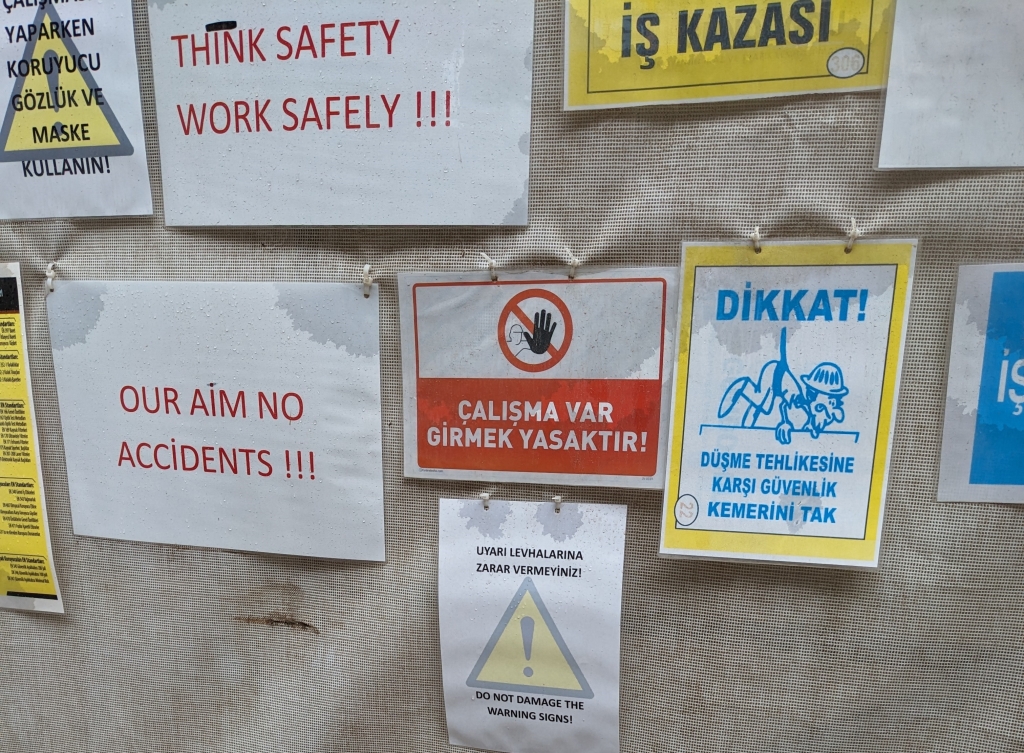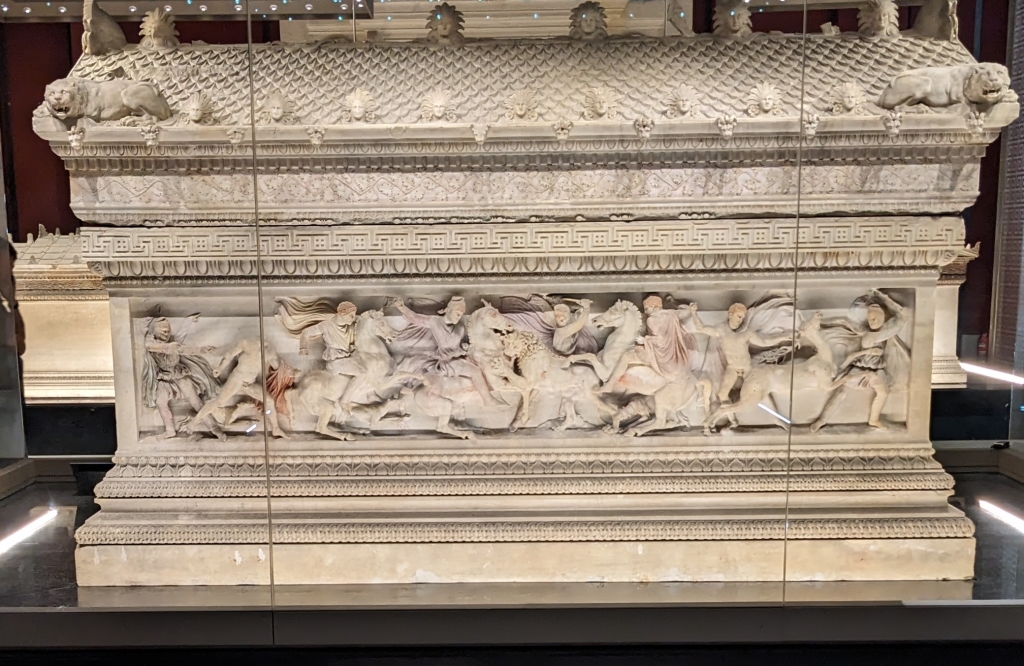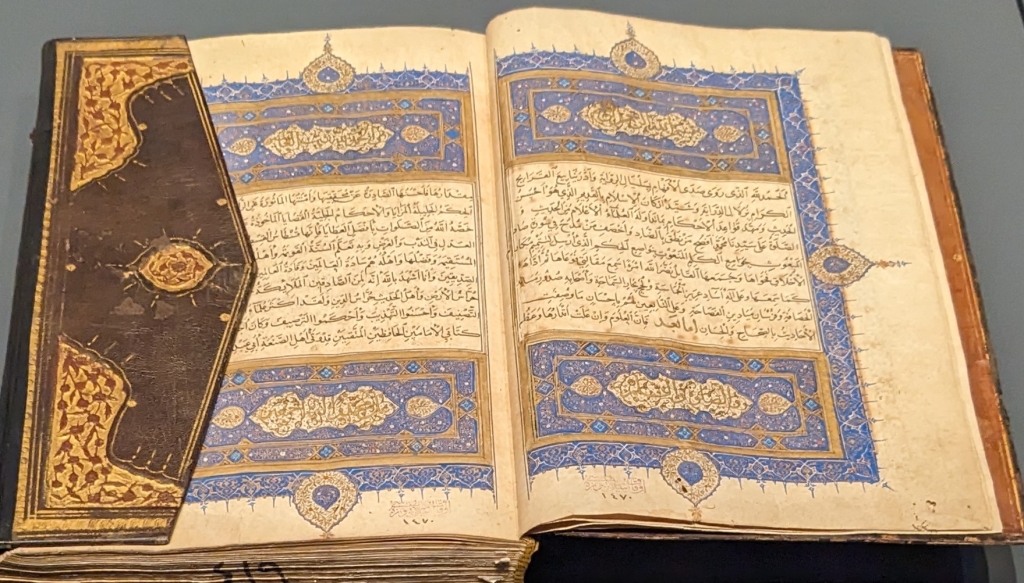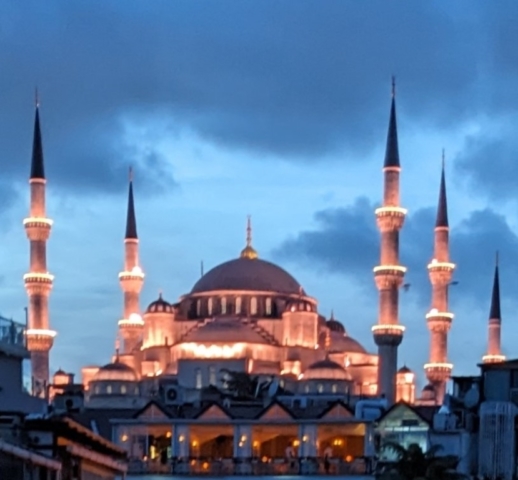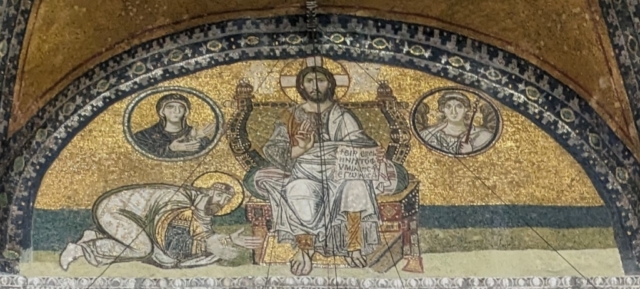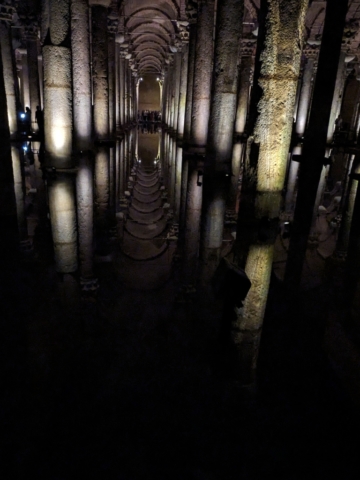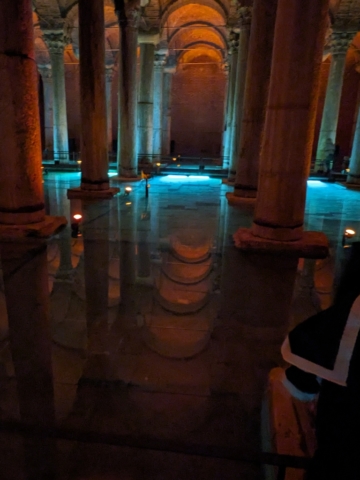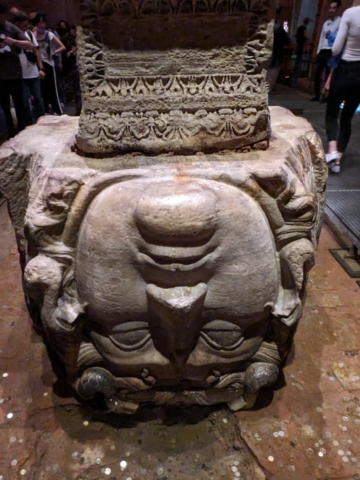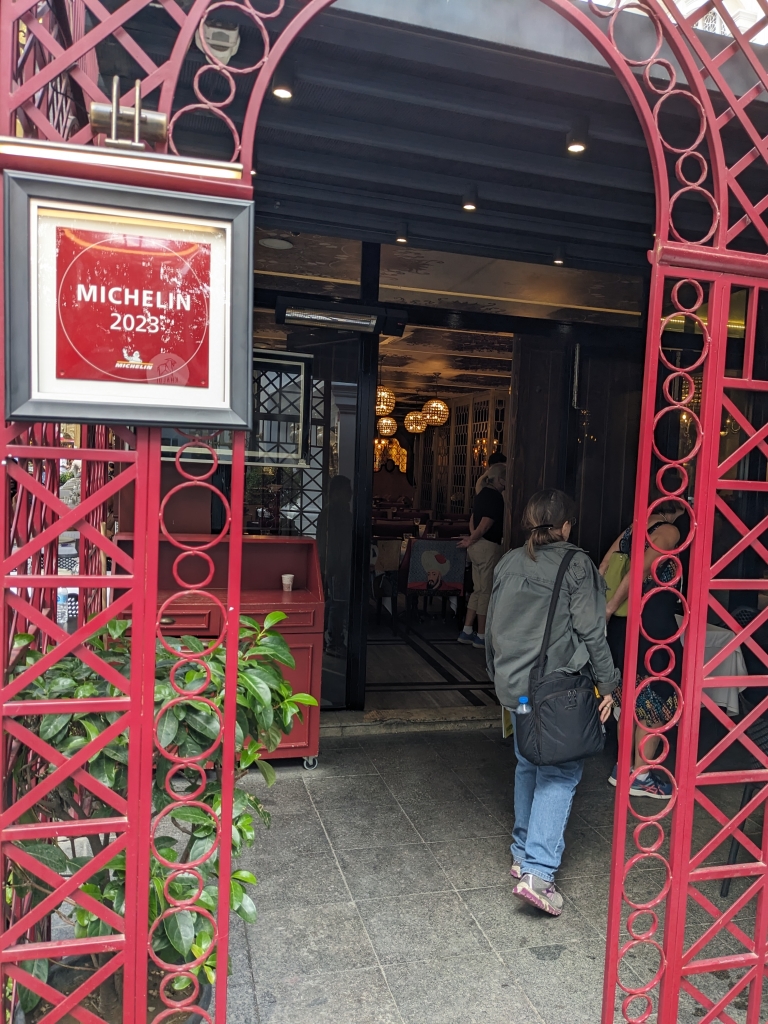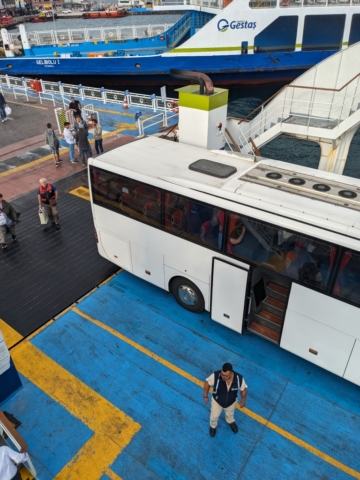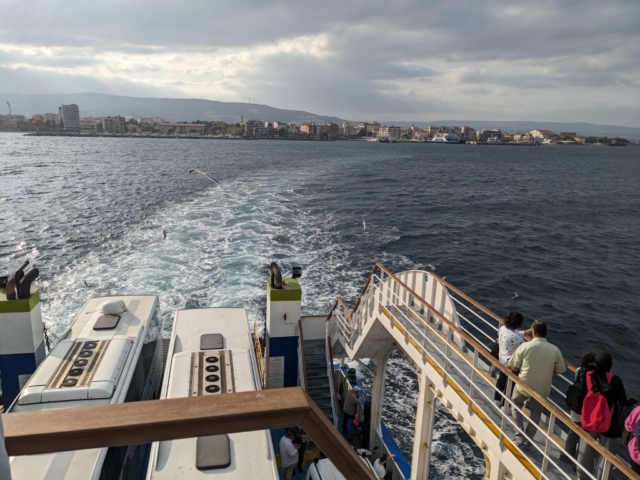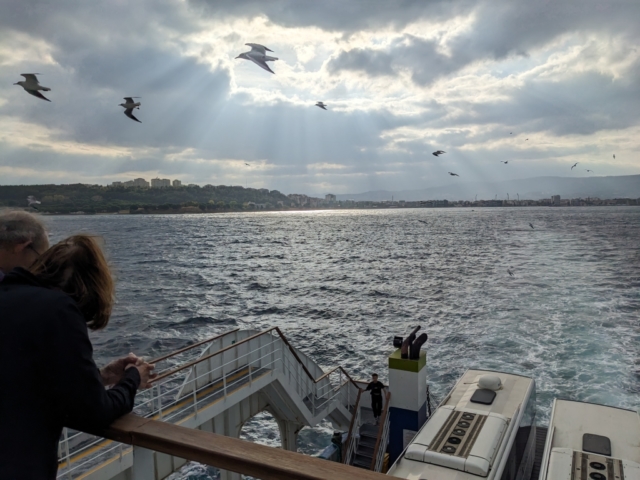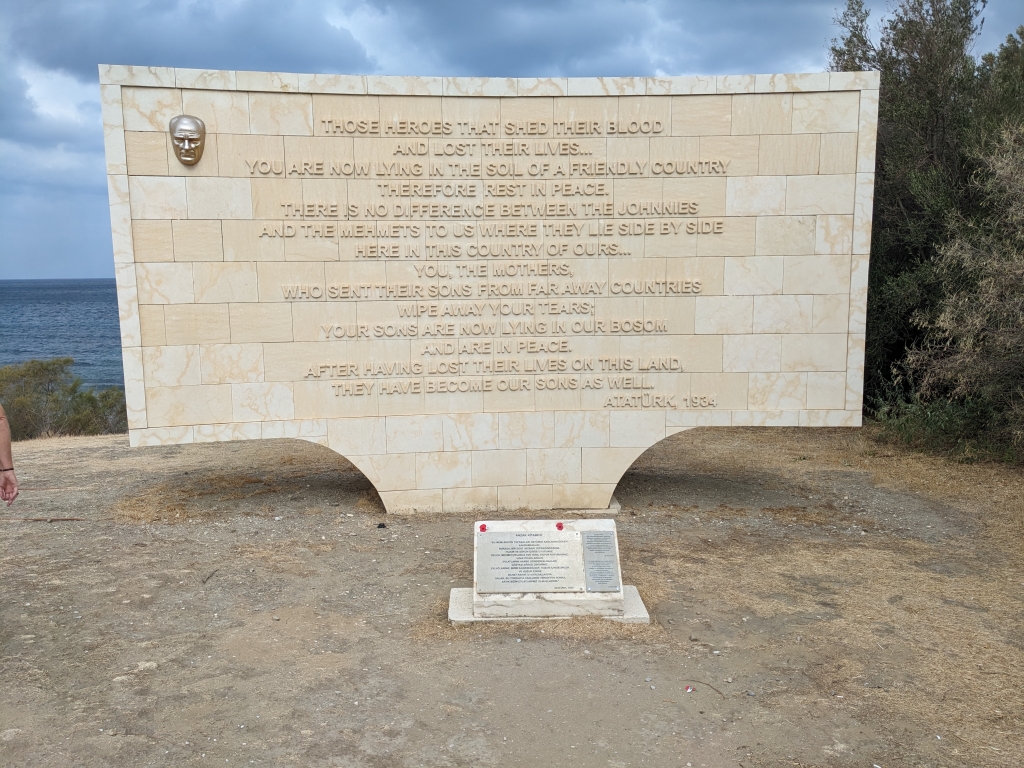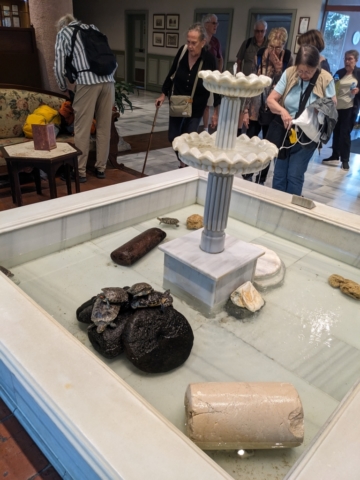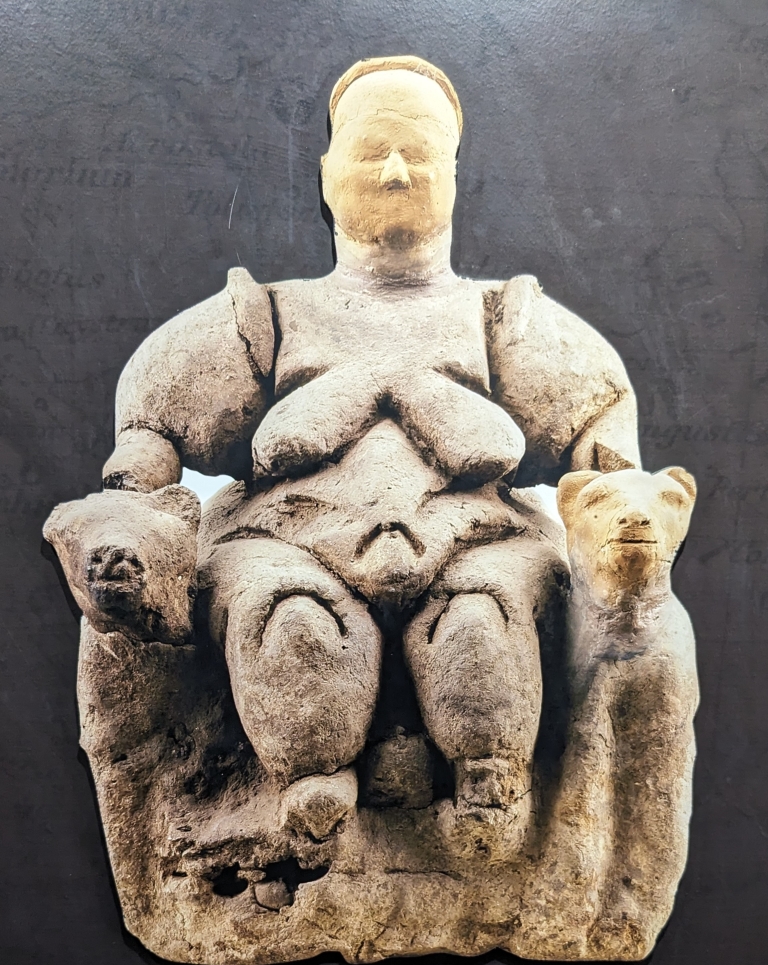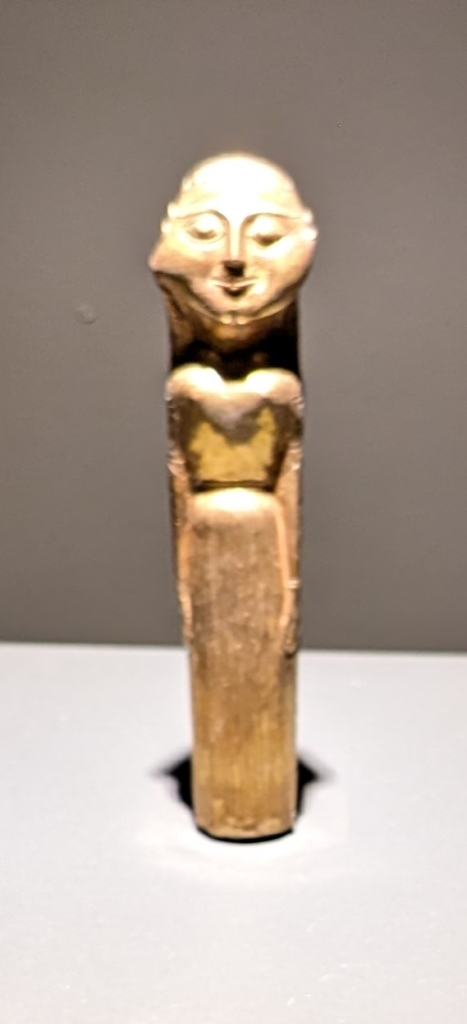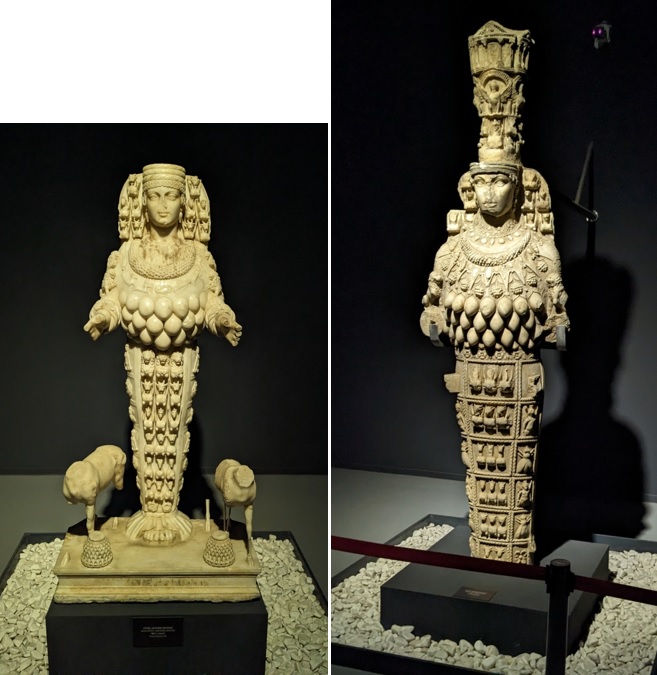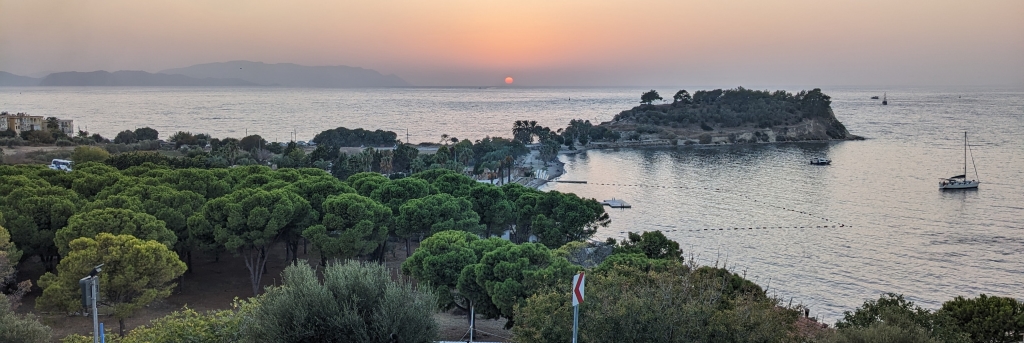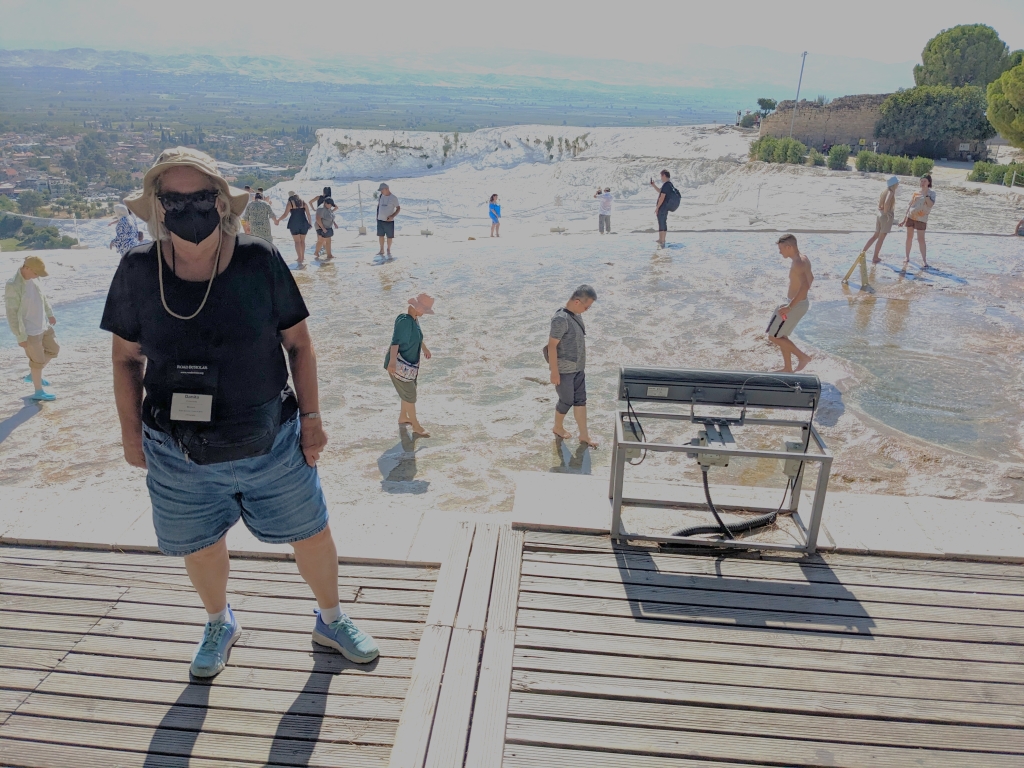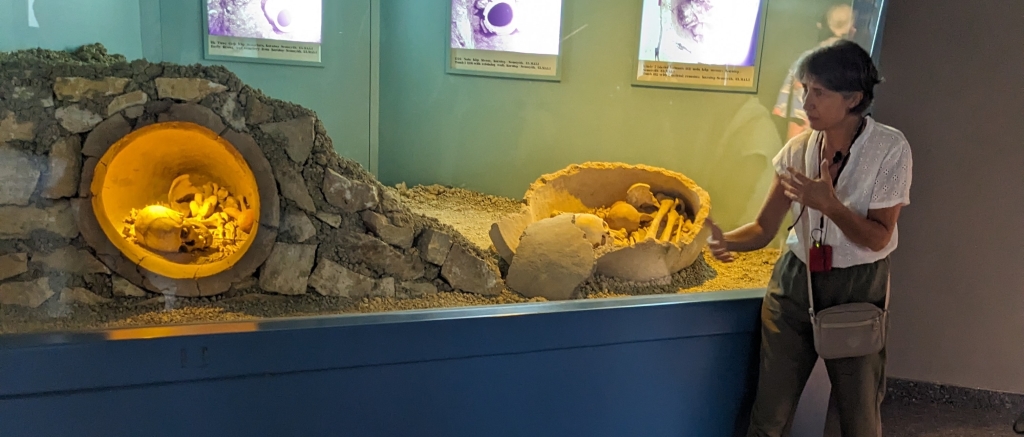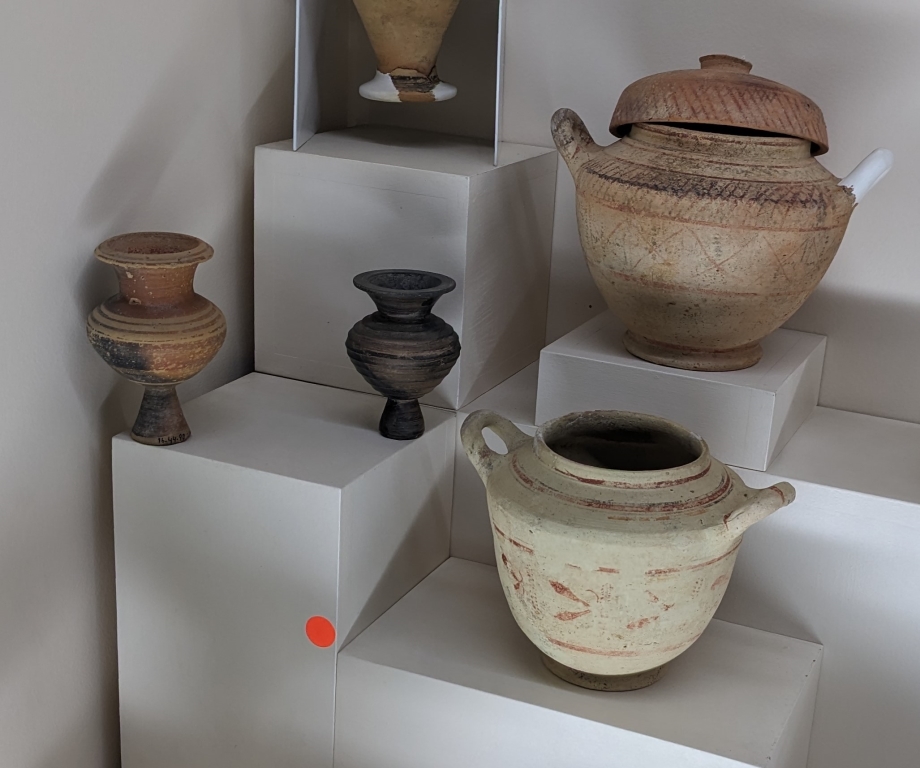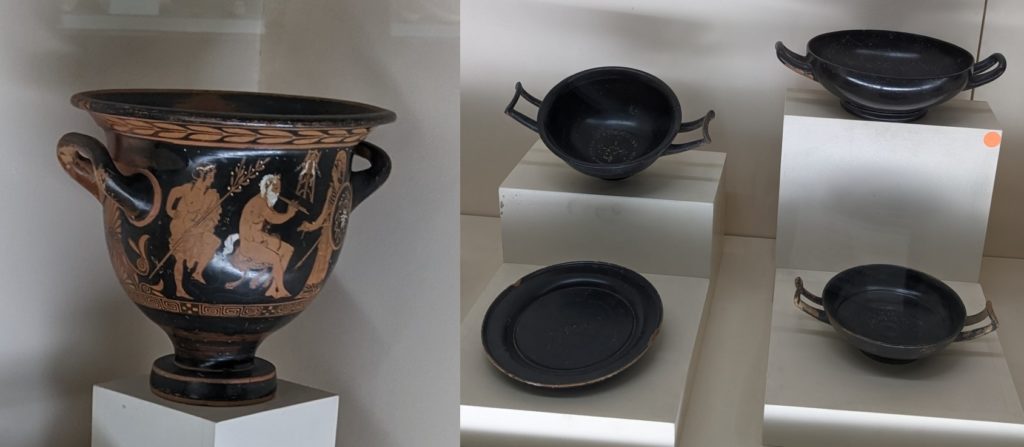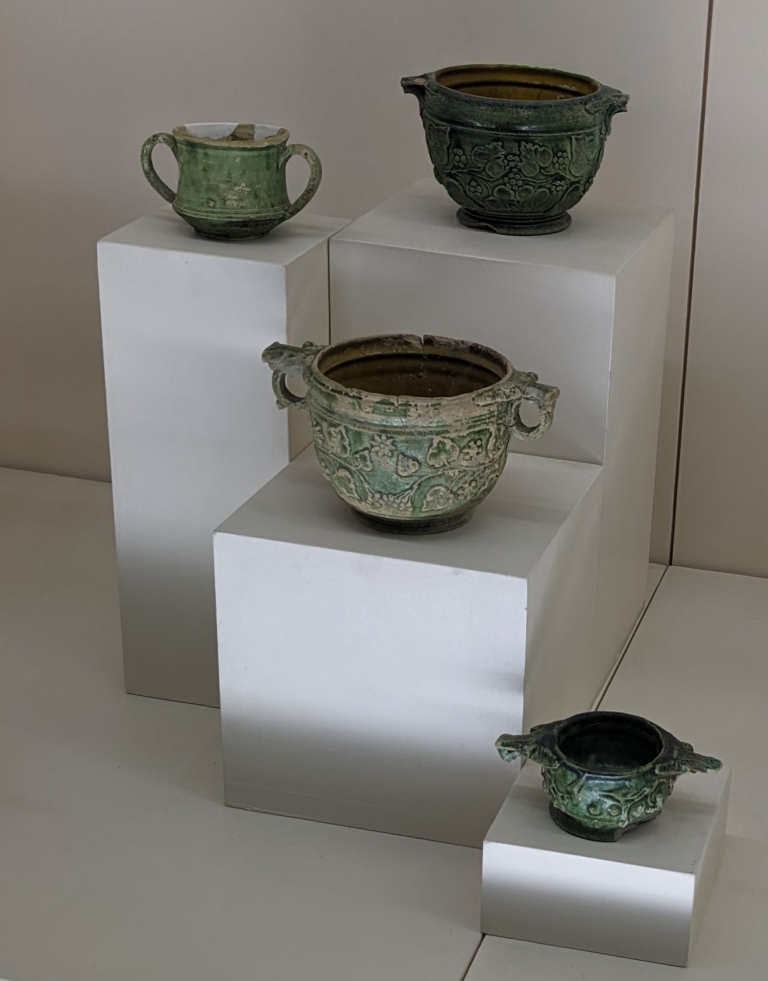Our first stop was the Dolmabahce Palace, finished in 1856. It was built at a time when the Ottoman economy was in shambles. Common people were unemployed and starving. It has 285 rooms and 68 toilets. It uses the very best (most expensive) materials. No wonder the Ottoman empire was on the edge of collapse. They wouldn’t let us take any pictures inside. You can search the internet.
We visited the Galata Tower. I didn’t want to take the chance that I would have to be stuffed into a small and very crowded European elevator. After the elevator ride, there were an additional 65 very steep steps to the top. That was enough to stop everybody else.
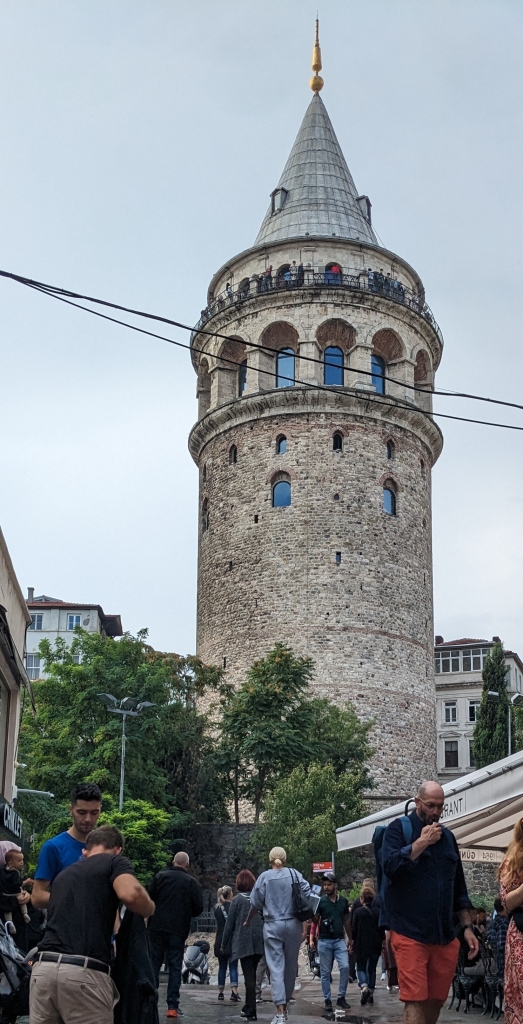
Our last stop was the modern art museum. I found they have an excellent coffee shop.
The food on our tour was always somewhere between good and fabulous, but our lunch today was the best food yet. We had kabob. The meat was perfectly cooked and extremely rich in favor. Our desert was Kunefe – shredded wheat, cheese, pistachios, honey with a dollop of clotted milk. It doesn’t sound all that great, but the taste was fabulous.
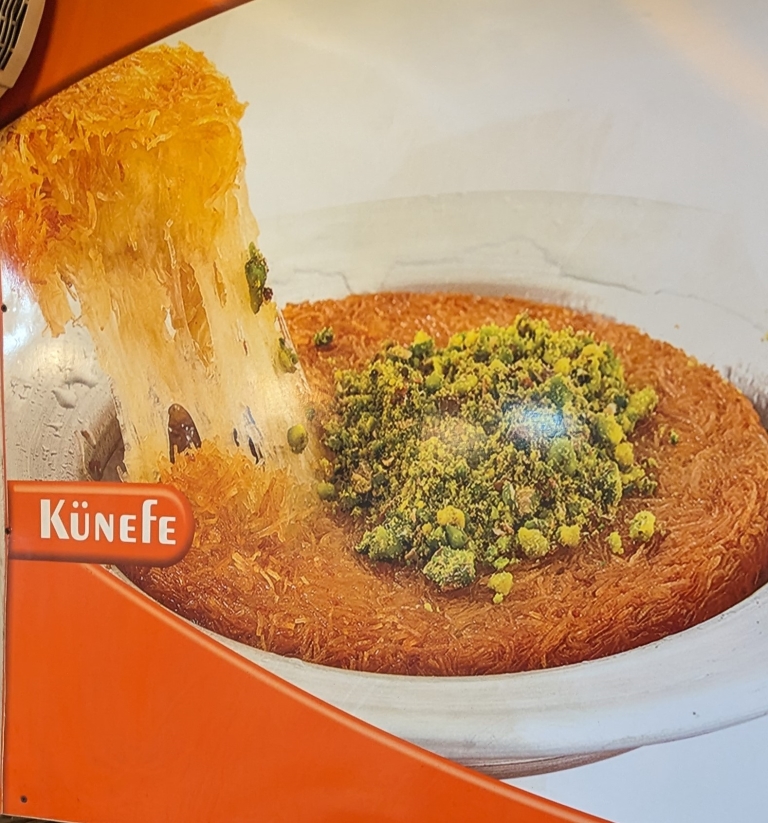
Tomorrow is our last day. There is a bicycle race in the city in the morning, so we will do a half day tour in the afternoon. Danita and I are off to find some ice cream for dinner. I hope this finds everybody doing well.

